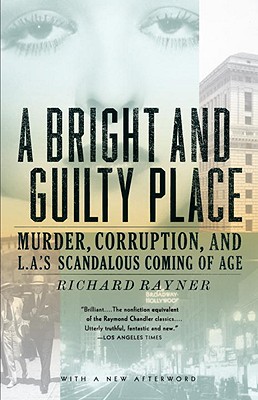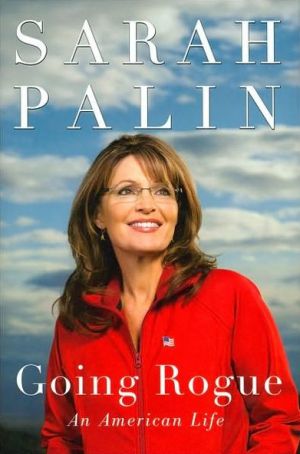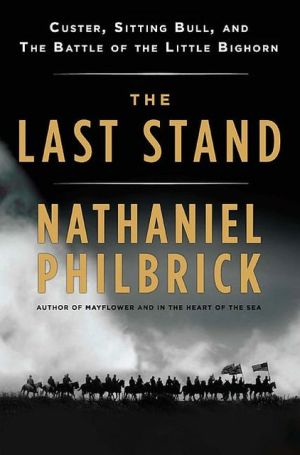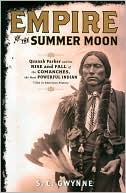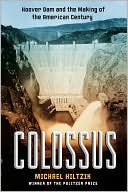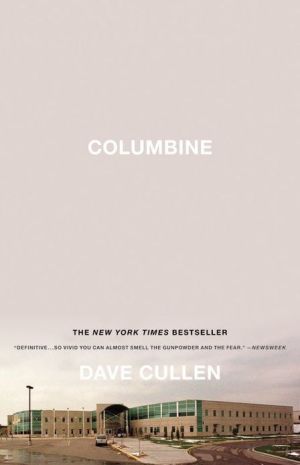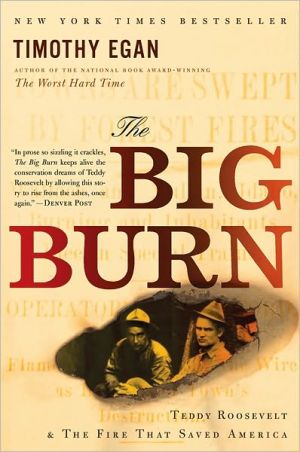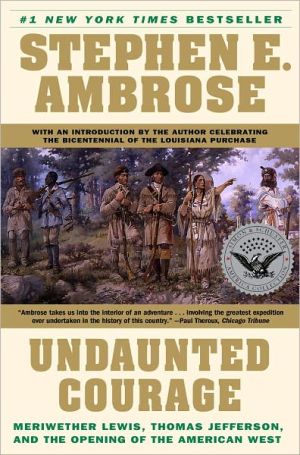A Bright and Guilty Place: Murder, Corruption, and L.A.'s Scandalous Coming of Age
Los Angeles was the fastest-growing city in the world, mad with oil fever, get-rich-quick schemes, and celebrity scandals. It was also rife with organized crime, with a mayor in the pocket of the syndicates and a DA taking bribes to throw trials. In A Bright and Guilty Place, Richard Rayner narrates the entwined lives of two men, Dave Clark and Leslie White, who were caught up in the crimes, murders, and swindles of the day. Over a few transformative years, as the boom times shaded into the...
Search in google:
Best Book of the YearThe Los Angeles Times • The Washington Post Los Angeles was the fastest growing city in the world, mad with oil fever, get-rich-quick schemes, and celebrity scandals. It was also rife with organized crime, with a mayor in the pocket of the syndicates and a DA taking bribes to throw trials. In A Bright and Guilty Place, Richard Rayner narrates the entwined lives of two men, Dave Clark and Leslie White, who were caught up in the crimes, murders, and swindles of the day. Over a few transformative years, as the boom times shaded into the Depression, the adventures of Clark and White would inspire pulp fiction and replace L.A.’s reckless optimism with a new cynicism. Together, theirs is the tale of how the city of sunshine went noir. Publishers Weekly In his unfocused history of crime-ridden Los Angeles in the 1920s, nonfiction writer and novelist Rayner (The Associates) touches on too many scandals-and scandalous characters-to make his account coherent. Leslie White, the young and idealistic DA's investigator (and, later, pulp fiction writer) seems like the only honest man in town, especially compared with the likes of promising prosecutor-turned-murder-suspect Dave Clark. Before the Depression hit, L.A. was swimming in wealth, not only from the burgeoning Hollywood studios but also from the oil boom. White saw firsthand how deep the city's corruption ran, from organized crime boss Charlie Crawford's "System," whose tentacles reached the highest echelons of politics and law enforcement, to the press, always ravenous for another sensational story, a "circulation-boosting crusade." Crawford's brutal murder in 1931 and star prosecutor Clark's emergence as the prime suspect is only one of the tales Rayner touches on in his chaotic chronicle of the city. Despite cameos by familiar faces-including noir master Raymond Chandler-readers may be overwhelmed by the onslaught of details, intriguing as they might be. (June 23)Copyright © Reed Business Information, a division of Reed Elsevier Inc. All rights reserved.
1\ The Mystery Is Announced\ "CHARLIE CRAWFORD AND EDITOR SLAIN!" screamed the headline in the Los Angeles Illustrated Daily News. The date was Thursday, March 20, 1931. At about 4:30 P.M. the previous afternoon the fifty-four-year-old Crawford, nicknamed "The Gray Wolf" because of the silvery-gray hair that waved and curled across his head, had been gunned down in his office on Sunset Boulevard. Also killed was Herbert Spencer, a veteran journalist who'd been with Crawford in the room. "EX-BOSS FALLS TO LONG-FEARED GUNMAN BULLET," the News went on. "Crawford, kingpin politician, lived until 8:32 P.M. last night, a little more than four hours after the shooting. He died without revealing the identity of his assailant, according to detectives . . ."\ Crawford had been, and many believed he still was, a "boss," a key player in what was known as "The System," a low-profile but all-powerful syndicate that ran the gambling, prostitution, and bootlegging rackets in Los Angeles. "He was the most feared and dictatorial power in the city, its behind-the-scenes czar," wrote Beverly Davis, who ran an upscale brothel for Crawford. "You could get away with murder under his wing." This was L.A.'s brand of gangsterism: Crawford used officers of the Los Angeles Police Department to collect the take from the underworld captains. He worked behind the scenes with Kent Kane Parrot, a fixer who'd had George Cryer, the mayor of Los Angeles from 1921-29, pretty much in his pocket. It was a discreet yet effective arrangement that had been in place since Crawford and Parrot contrived to get Cryer elected. As far as the rackets were concerned, L.A. had been a closed town ever since, locked down by Crawford and The System. "It was the most lucrative, the most efficient, and the best-entrenched graft operation in the country," News city editor Matt Weinstock wrote later. Now somebody was monkeying with that operation, trying to destroy it perhaps, or take it over.\ "Racketeer bullets declared open warfare in the Los Angeles underworld yesterday," said the L.A. Examiner. "MAN HUNT ON!" An announcement went out over the newly perfected LAPD radio system: "Wanted for murder--an American, about six feet tall, weighing between 150 and 175 pounds, and between 35 and 40 years of age. Hair, brown. A small black moustache. Dressed in neat blue suit and wearing sailor straw hat."\ Was this the killer? It seemed so.\ "The political structure rocked precariously while everybody tried to imagine who could have fired the fatal shots," wrote Leslie White, a young detective working in the investigative unit of the District Attorney's office. For White, the case had a particular significance, a poignancy almost. He'd met Charlie Crawford several times and had liked him. "Despite the unanimous opinion that the murder of Crawford was a piece of civic betterment, I felt a pang," White wrote. "Would his death improve the city in any way? I doubted it. A new boss might be less efficiently corrupt. The King was dead--but who would seek the throne?"\ White worked downtown, in the Hall of Justice, a new building opposite the even newer white tower of City Hall. On that morning after the shootings, White was in his small cubbyhole of an office, talking with colleagues, trying to figure out who could have pulled the trigger when his boss, Blayney Matthews, the burly and genial head of the D.A.'s investigative unit, came in with the news.\ "We're looking for Dave Clark," Matthews said.\ Leslie White blinked--unable, for a moment, to believe his ears. "Our Dave Clark," he said.\ "That's right," Matthews said, and White rocked back in his chair.\ Dave Clark--known to the press as "Debonair Dave" or "Handsome Dave"--was a crusading litigator and former assistant district attorney who was now running for judge. He was a war hero with matinee-idol looks. He was, moreover, Leslie White's friend.\ "Had the chief suddenly accused me of the crime, I couldn't have been more astounded," White wrote.\ Sorry to see Dave Clark's name in any way connected with this sensational crime, White hoped for the best, believing that at any moment Clark would arrive at the Hall of Justice and clear his name. But hours went by and nothing happened, and White himself became involved in the unavailing search for the suspect. Dave Clark had vanished, nowhere to be found.\ A great crime saga had been set in motion, with toothsome details that Raymond Chandler--who, at the time, was an executive in L.A.'s oil business--would soon feed directly into one of his very first works of fiction, the short story "Spanish Blood." Chandler, when he turned to writing, wrote what he knew, and he knew Los Angeles--not just its map and climates, but its history of corruption and violence. Like James M. Cain, Horace McCoy, and others who wrote in and about L.A. during the years of the Great Depression, Chandler drew material from the headlines and bullet-prose of the tabloids. True crime tells the story of how L.A. got hardboiled and noir.\ Flash back to 1910, when the population of Los Angeles was 310,000 or thereabouts, many of them Spanish-speaking. "There were more cows than people," says the writer and historian D. J. Waldie, and he might not have been joking. Ten years later, in 1920, the population was 576,000. By 1930 the figure would rise to 1,250,000, and L.A. County--which gathers together various unincorporated cities, including Santa Monica, Beverly Hills, Venice, and Culver City, as well as the city of L.A. itself--would be home to almost 2.5 million souls.\ Throughout this astonishing period, L.A. was the fastest-growing city in the world. In America only San Francisco had ever grown so fast, during the years of the Gold Rush following 1849. But by the 1920s, San Francisco's boom was long done. New York, Boston, and even Chicago had never known an explosion like the one that was happening in L.A. Every working day throughout the 1920s, builders started more than fifty new homes. Each week a new hotel went up. The year 1923 alone saw the construction of 800 office buildings, 400 industrial buildings, 150 schools, 130 warehouses, 700 apartment buildings, and more than 25,000 single dwellings. Property prices doubled, tripled, quadrupled, eventually rising sixfold through the decade. The city began to spread, amoeba-like, in search of its suburbs, although in those days L.A. still meant downtown, thriving with business and residences. In 1923 a Saturday Evening Post article about the boom ran a photo showing the district, chockablock with office buildings, all about twelve to fifteen stories tall, as high as the earthquake regulations would then allow. "Most of these buildings are less than a year old," said the caption.\ L.A. was "a civilization that will not need to hang its head when the Athens of Pericles is mentioned," wrote the New Republic in 1927--when L.A. seemed like a strapping youth, foolish and violent at times, bursting out of its skin with exuberance. Within a few years the New Republic's pronouncement would seem bizarre and deluded. By 1931 the depression gripped California. Capitalism was in crisis and people no longer spoke of L.A. as a utopia with the added luxury of a voluptuous climate. Rather, for a while the whole social fabric was stretched and tattered and in danger of being torn in two. L.A. still had the sunshine, but it could be a lonely and hellish place--rife with crime, riddled by corruption, and drained of civic and moral purpose. Banks failed, thousands of businesses went to the wall, foreclosures hit epidemic proportions, and empty lots awaited the rush of investment that had until recently seemed so certain. People blew their brains out, gassed themselves, hanged themselves, took pills and poison, slit their wrists, or walked into the ocean. Southern California became America's suicide capital, an amazing phenomenon on which Edmund Wilson would report for the New Republic, driven to revise its previous optimism. In 1931 alone there were over 750 suicides in L.A.; so many threw themselves from the handsome Colorado Street Bridge crossing the Arroyo Seco Canyon in Pasadena that the city first appointed a special police detail to guard the bridge and, when that didn't work, erected high fences of barbed wire to stop people from jumping which remain to this day.\ In its early days, L.A. attracted lower middle-class and middle-middle-class retirees from the American Midwest, people drawn to the life of relaxed ease promoted in the booster ads of L.A.'s Chamber of Commerce. A further growth spurt came with the development of an industrial base in the 1920s. At the same time the recently arrived movie business began to attract a different sort of young person--attractive, ambitious, driven. One could argue that L.A. needed and invented Hollywood in order to provide itself with a different demographic and to achieve maturity. Then yet another element was thrown into the mix. After 1929 the character of immigration changed again as the roads into California filled with the armies of the indigent and the unemployed, riding in battered jalopies or hitchhiking. At the height of the Depression 1,500 arrived daily, many of them boys, said The Nation, "who beat their way out on freight trains and are in danger of becoming hopeless tramps or criminals."\ In this defeated atmosphere, the expressionless blue of the sky and the unchanging rhythm of perfect days that followed each other one after the other added to the melancholy. "Outside the bright gardens had a haunted look, as though wild eyes were watching me from behind the bushes, as though the sunshine itself had a mysterious something in the light," wrote Raymond Chandler.\ Cities have characters, pathologies that can make or destroy or infect you, states of mind that run through daily life as surely as a fault line. Chandler's "mysterious something" was a mood of disenchantment, an intense spiritual malaise that identified itself with Los Angeles at a particular time, what we call noir. On the one hand noir is a narrow film genre, born in Hollywood in the late 1930s when a European visual style, the twisted perspectives and stark chiaroscuros of German Expressionism, met an American literary idiom. This fruitful commingling gave birth to movies like Double Indemnity, directed by Vienna-born Billy Wilder and scripted by Raymond Chandler from a James M. Cain novella. The themes--murderous sex and the cool, intricate amorality of money--rose directly from the psychic mulch of Southern California.\ But L.A. is a city of big dreams and cruelly inevitable disappointments where noir is more than just a slice of cinema history; it's a counter-tradition, the dark lens through which the booster myths came to be viewed, a disillusion that shadows even the best of times, an alienation that assails the senses like the harsh glitter of mica in the sidewalk on a pitiless Santa Ana day. Noir--in this sense a perspective on history and often a substitute for it--was born when the Roaring Twenties blew themselves out and hard times rushed in; it crystallized real-life events and the writhing collapse of the national economy before finding its interpreters in writers like Raymond Chandler.\ In this book I evoke the time when Los Angeles came of age and found a defining tone. Many people--some famous, others not--will feature in an urban mosaic in which everything and everybody seems to be connected, and, in one way or another, is corrupt, is seeking corruption, or is trying to escape it. But, for me, the story belongs most prominently to two very different young men, both long dead and largely forgotten: Leslie T. White and David H. Clark. White, as we've seen, was for a while a D.A.'s investigator. In time he, like Raymond Chandler, would transform himself into a writer. For Clark, the veteran from WWI and high-flying attorney, the future would be very different. White, who was small and slight and peered at the world through horn-rimmed spectacles, proved himself undauntable. The tall and suave Clark, with his movie star looks and his huge promise, went wrong in a most spectacular way. These contrasting trajectories have much to say about Los Angeles, and maybe about America. The two men are symbols of light and dark, linked emblems in a city's scandalous process of becoming.\ 2\ Dam Disaster\ \ In 1928 the boom ran full tilt and the leaks in L.A.'s destiny had yet to appear. Nobody guessed yet that depression and a haunted future were around the corner, waiting to wash bright hope away. Leslie White was living in Ventura, about fifty miles north of the city. He was in his mid-twenties, recently married, and had his own photography business. Murder, and indeed Los Angeles itself, were far from his mind.\ Ventura had a population of fewer than 15,000. It had a Main Street, a courthouse, one of the original Spanish missions, and two small newspapers. On an average afternoon, its air was thick with the smell of citrus. But this country town was being transformed by oil fields that had been discovered nearby. Several of these gushers had been brought in by Ralph Lloyd in partnership with Joseph Dabney, the former a friend of Raymond Chandler's and the latter who happened to be his boss in 1928. The existence of these Ventura fields, and a dispute concerning revenues from them, would be of great and surprising significance for Chandler's career as a writer. But that was in the future.\ Leslie White came to Ventura in 1922. Born on May 12, 1903, he'd been raised in Canada--in Ottawa, Ontario. His father died when he was seven years old; his mother and aunts, strict Methodists, took the young boy to church three times a week, doing their best to point him in the ways of the Lord. He left school at fifteen, prone to ill health, and with an earnest and highly moral worldview. In Northern Canada he worked in a lumber mill and as a railroad fireman. He claimed, too, that he'd tried his hand as a prizefighter and traveled with a carnival. Certainly he loved adventure, and all his life he would be restless, searching for the next interest. On arrival in Ventura he secured a job as a park ranger, saying he knew how to ride though he'd never been on a horse. Mounting for the first time, he slipped and fell, breaking a collar bone. After he recovered, he went back to work, protecting land that had been bought for rich hunters. He became a deputy sheriff, despite admitting that what he knew of the law was "gleaned from Conan Doyle and motion pictures." His superiors called him "The Kid." He was touchy about his physique and youth, and he had a firecracker temper. Once he arrested a man for having carnal relations with a cow. On the lonely fog-swept promontory of Point Magu, he watched rumrunners armed with machine-guns bringing their crates of bootleg booze ashore. Gung ho, he was about to steam in to make some arrests when his superior warned him off, pointing out that the trucks into which the rumrunners were loading their stuff were driven and guarded by cops from the LAPD. This early brush acquainted White with how things worked in the big bad city where, as he would later write, "brains and money, or, better still, a combination of both, could sabotage the machinery of justice at will."\ White shifted jobs frequently. The 1926 Ventura County directory lists him as a driver for Shell Oil and has him living on Poli Street, close to the courthouse. By 1928, however, he was married to Thelma, his first wife, and had opened the Leslie White Studio on Main Street. He loved gadgets and machines and had transformed himself into a photographer. He made portraits, or pictures of weddings and christenings, and did fingerprint and identification work for Ventura's newly inaugurated police force. His business did well. A wall-sized blowup of one of his street scenes is still featured in the main Ventura library. He was also learning to fly and was a fan of Clara Bow, whose film Red Hair finally reached Ventura in March 1928. White was a member of the Chamber of Commerce, the Rotary Club, and the Breakfast Club (at one meeting of which he caused a rumpus by releasing, as a prank, a tame circus lion!).\ Leslie White was a success, and if truth be told, more than a little bored; but that was about to change.
Cast of Characters xi1 The Mystery Is Announced 12 Dam Disaster 73 A Hero Named Clark 164 Angel City 255 The Gangster Goes Down 356 Oil, Law, and Scandal 427 Oup Detective Learns the Ropes 508 Shots in the Night 559 Beverly Hills C.S.I 6010 Covep-Up 6811 Good Time Charlie 7612 Systems Under Siege 8813 Reach for a Typewriter 9814 Raymond Chandler - Oil Man! 10315 Entrapment of a News Hound 11016 Running with the Foxes 11517 Zig-Zags of Graft 12118 Red Hot Bow 13119 The Gutting of Clara 13820 Hard Times in Lotus-Land 14821 Double Death on Sunset 15422 The Ballad of Dave Clark 16323 They Can Hang You 17524 Telling It All 18325 Verdicts 19326 A Hooker's Tale 20127 Music of the City 20628 Black Mask Merry-Go-Round 21229 Sad Song 21930 Lives Go On 22431 A Personal Note 230Afterword 237Acknowledgments 241Sources 243Bibliography 253Index 261
\ Publishers WeeklyIn his unfocused history of crime-ridden Los Angeles in the 1920s, nonfiction writer and novelist Rayner (The Associates) touches on too many scandals-and scandalous characters-to make his account coherent. Leslie White, the young and idealistic DA's investigator (and, later, pulp fiction writer) seems like the only honest man in town, especially compared with the likes of promising prosecutor-turned-murder-suspect Dave Clark. Before the Depression hit, L.A. was swimming in wealth, not only from the burgeoning Hollywood studios but also from the oil boom. White saw firsthand how deep the city's corruption ran, from organized crime boss Charlie Crawford's "System," whose tentacles reached the highest echelons of politics and law enforcement, to the press, always ravenous for another sensational story, a "circulation-boosting crusade." Crawford's brutal murder in 1931 and star prosecutor Clark's emergence as the prime suspect is only one of the tales Rayner touches on in his chaotic chronicle of the city. Despite cameos by familiar faces-including noir master Raymond Chandler-readers may be overwhelmed by the onslaught of details, intriguing as they might be. (June 23)\ Copyright © Reed Business Information, a division of Reed Elsevier Inc. All rights reserved.\ \ \ \ \ Kirkus ReviewsNoir-tinged portrait of the sick soul of America's Promised Land. Rayner (The Associates: Four Capitalists Who Created California, 2007, etc.) traces the roots of the seamy allure of Los Angeles in this vivid social history, focusing on the murder trial of Dave Clark, a dashing, charismatic L.A. prosecutor whose fall from grace serves as a neat metaphor for the city: glamour and promise concealing an endemic corruption that, paradoxically, enhances the glamour. Clark was a crack prosecutor; in his early 30s, he had several high-profile victories to his credit and appeared to be bound for great things. Instead, he was sucked into the vortex of " ‘The System,' a low-profile but all-powerful syndicate that ran the gambling, prostitution, and bootlegging rackets in L.A." His mysterious involvement in the murders of Charlie Crawford, L.A.'s underworld boss, and reporter Herbert Spencer led to a sensational trial that captivated the public with its dynamic cast of characters, secret agendas and shocking violence-it was just like a movie. The author's account of the trial is engrossing, as is his handling of the supporting characters, including Leslie White, a pioneering scientific investigator who leveraged his experiences into a successful career as a pulp-fiction; Clara Bow, the rapidly imploding movie sex goddess; E.L. Doheny, scandal-ridden oil baron; and unhappy oil executive-turned-author Raymond Chandler. Rayner also provides useful glosses on the Teapot Dome scandal, the catastrophic Julian Petroleum Ponzi scam and the horrific flood caused by the failing of the St. Francis Dam. However, despite some striking descriptive passages, the author fails to create a coherent picture of LosAngeles in the '20s and '30s. Rayner's fascination with Clark dominates, and scant attention is paid to the lives of ordinary citizens trying to function within a fatally compromised system. Nonetheless, the narrative of crooked cops, larcenous lawyers and perverted politics is compelling. The material would have benefited from a wider focus, but Rayner delivers a lurid, low-down portrait of Los Angeles sure to appeal to readers interested in the real L.A. confidential.\ \
